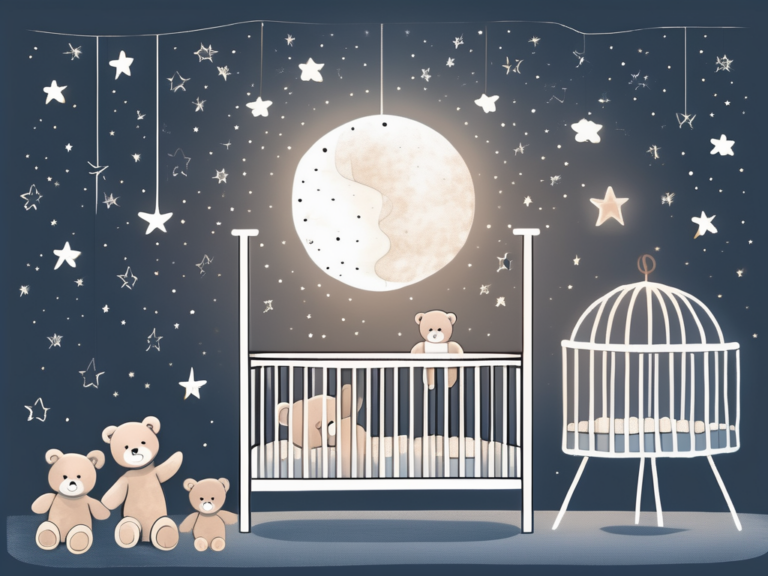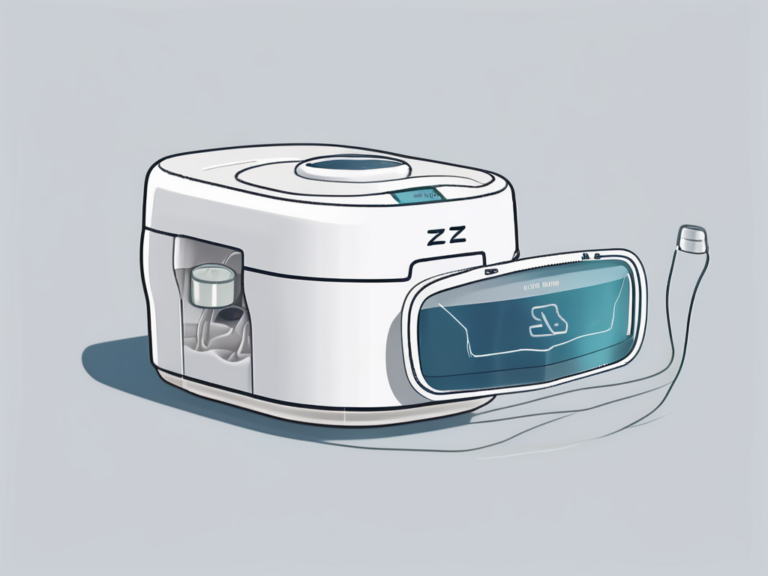Tips on How to Put Baby to Sleep
Putting your baby to sleep can sometimes be a challenging task. Understanding your baby’s sleep patterns and creating a soothing sleep environment are key factors in helping your little one get the rest they need. Additionally, establishing a bedtime routine and practicing safe sleep practices are crucial for a good night’s sleep. In this article, we will explore these tips and more to help you navigate the world of baby sleep.
Understanding Your Baby’s Sleep Patterns
Every baby is unique, and their sleep patterns may vary. However, there are some common characteristics to be aware of. It’s important to understand that newborns sleep for shorter periods of time, usually between 14 to 17 hours a day. As they grow older, they will gradually sleep for longer stretches at night and have shorter naps during the day.
The Importance of Regular Sleep Schedules
One key aspect of your baby’s sleep routine is establishing regular sleep schedules. Babies thrive on consistency, so try to set the same bedtime every night. By doing so, you help regulate their internal clock and signal to their body and brain that it’s time to sleep.
Having a consistent sleep schedule not only helps your baby get the rest they need, but it also benefits you as a parent. Knowing when your baby will sleep allows you to plan your day accordingly, ensuring that you have time for self-care or other important tasks.
Recognizing Sleep Cues in Infants
As you spend more time with your baby, you will start to notice certain cues that indicate they are ready for sleep. These cues can include rubbing their eyes, yawning, or becoming more fussy. By recognizing these signs, you can help your baby transition to sleep before they become overtired.
It’s important to note that every baby may have their own unique set of sleep cues. Some babies may become quieter and more calm when they are ready for sleep, while others may become more active or seek comfort from a pacifier or a favorite blanket. By paying close attention to your baby’s individual cues, you can better understand their sleep needs and provide them with the comfort and support they require.
In addition to recognizing sleep cues, it’s also helpful to create a soothing bedtime routine for your baby. This routine can include activities such as a warm bath, gentle massage, or reading a bedtime story. By consistently following this routine, you can create a calm and relaxing environment that signals to your baby that it’s time to wind down and prepare for sleep.
Creating a Soothing Sleep Environment
A peaceful sleep environment is essential for your baby’s restful sleep. Choosing the right room temperature is important to ensure they are not too hot or too cold. Aim for a temperature between 68 to 72 degrees Fahrenheit (20 to 22 degrees Celsius).
The Role of White Noise in Promoting Sleep
White noise, such as a gentle fan or a dedicated white noise machine, can help drown out disruptive sounds and create a soothing atmosphere for your baby. The consistent and monotonous sound can mimic the comforting noises they heard in the womb, promoting better sleep.
Creating a Calming Visual Environment
While temperature and white noise play a crucial role in creating a soothing sleep environment, the visual aspect should not be overlooked. The colors and patterns in your baby’s sleep space can have a significant impact on their ability to relax and fall asleep.
Consider using soft, muted colors such as pastels or neutrals for the walls and bedding. These colors have a calming effect on the mind and can help create a peaceful atmosphere. Avoid using bright or stimulating colors, as they can be too visually stimulating for your baby and make it harder for them to wind down.
The Importance of a Comfortable Sleep Surface
Another key element in creating a soothing sleep environment for your baby is providing them with a comfortable sleep surface. A good quality crib mattress that offers the right amount of support and cushioning is essential for promoting restful sleep.
Look for a mattress that is firm and breathable to reduce the risk of suffocation and overheating. It should also be waterproof and easy to clean, as accidents are bound to happen during the night. Additionally, consider using a mattress protector to keep the mattress in pristine condition and prolong its lifespan.
Establishing a Bedtime Routine
A consistent bedtime routine signals to your baby that it’s time to wind down and prepare for sleep. One way to create a relaxing pre-sleep ritual is through bath time. Giving your baby a warm bath can help them relax and unwind.
But did you know that bath time offers more than just a chance to clean your little one? It’s a sensory experience that can stimulate your baby’s development. As the warm water envelops their body, it not only soothes their muscles but also enhances their sense of touch. The gentle splashing and the feel of water on their skin can provide a calming sensation, making bath time an ideal opportunity to create a serene environment before bedtime.
The Power of Lullabies and Bedtime Stories
Singing lullabies or reading bedtime stories can be a magical part of the bedtime routine. The soothing melodies and gentle words can help calm your baby and create a positive association with sleep.
But did you know that lullabies and bedtime stories have been used for centuries as a way to bond with babies and promote their cognitive development? The rhythmic patterns and repetitive nature of lullabies can help soothe your baby’s nervous system, making them feel safe and secure. Additionally, the melodic tunes can stimulate their auditory senses, fostering language development and early literacy skills.
Bedtime stories, on the other hand, offer a chance for you to engage with your baby through shared reading experiences. As you read aloud, your baby not only hears the words but also observes your facial expressions and gestures, strengthening their social and emotional connections. Furthermore, exposure to different storylines and characters can ignite their imagination and curiosity, setting the stage for a lifetime love of reading.
Safe Sleep Practices for Infants
Ensuring your baby’s safety during sleep is of utmost importance. The correct sleeping position for your baby is on their back. This position greatly reduces the risk of sudden infant death syndrome (SIDS).
Avoiding Sleep Hazards in the Crib
Make sure your baby’s crib is free from any soft bedding, pillows, or stuffed animals that could pose a suffocation risk. Keep the crib clutter-free to provide a safe sleep environment for your little one.
Creating a Calming Sleep Routine
In addition to following safe sleep practices, establishing a calming sleep routine can greatly benefit your baby’s sleep quality. A consistent routine can help signal to your baby that it’s time to wind down and prepare for sleep. This can include activities such as a warm bath, gentle massage, or reading a bedtime story. By incorporating these soothing activities into your baby’s bedtime routine, you can create a peaceful atmosphere that promotes relaxation and better sleep.
Monitoring the Room Temperature
Another important aspect of safe sleep practices is ensuring that the room temperature is suitable for your baby. It’s recommended to keep the room at a comfortable temperature, around 68-72 degrees Fahrenheit (20-22 degrees Celsius). This temperature range helps prevent overheating, which can increase the risk of SIDS. To maintain a consistent temperature, you can use a room thermometer or a thermostat to monitor the room’s conditions and make any necessary adjustments.
Dealing with Common Sleep Problems
Sleep disruptions are common for babies as they go through different developmental stages. Overcoming night wakings and short naps can be challenging, but it’s important to remain consistent with your sleep routine and provide comfort and reassurance to your baby.
Handling Sleep Regression and Separation Anxiety
Around 4 months and again at around 8-10 months, babies may experience sleep regression. During these periods, they may have trouble settling down and may wake frequently at night. This can be attributed to their brain development and newfound skills. Stay patient, provide comfort, and stick to your routine.
During sleep regression, it’s not uncommon for babies to experience separation anxiety. This can make it even more challenging for them to fall asleep and stay asleep. Separation anxiety typically peaks around 8-10 months, but it can occur at different times for each baby. It’s important to understand that separation anxiety is a normal part of their development and it will eventually pass.
When dealing with separation anxiety, it’s crucial to provide your baby with a sense of security and comfort. Establish a bedtime routine that includes activities that promote relaxation, such as a warm bath or reading a soothing story. This will help create a calming environment and signal to your baby that it’s time to wind down and prepare for sleep.
Additionally, consider using a transitional object, such as a soft blanket or a favorite stuffed animal, to provide your baby with a source of comfort and familiarity. This can help alleviate their anxiety and make the transition to sleep easier.
Remember, consistency is key when dealing with sleep problems. Stick to a regular sleep schedule, create a soothing bedtime routine, and provide your baby with the comfort and reassurance they need. With time and patience, you can help your baby overcome common sleep problems and establish healthy sleep habits.
When to Seek Professional Help
Most babies will experience some sleep disruptions at some point. However, if your baby consistently has trouble falling or staying asleep, it may be worth consulting a pediatric sleep specialist. These professionals can help identify any underlying issues or sleep disorders that need to be addressed.
Identifying Signs of Sleep Disorders in Infants
While occasional disturbances are normal, excessive sleep problems can be a sign of a sleep disorder. Look out for signs such as chronic snoring, restlessness, or difficulty breathing during sleep. If you notice any of these signs, it is important to seek medical advice to ensure your baby’s well-being.
Consulting a Pediatric Sleep Specialist
If you have tried various techniques and your baby’s sleep troubles persist, it may be beneficial to consult a pediatric sleep specialist. These experts have extensive knowledge and experience in dealing with sleep issues in infants. They can provide personalized advice and strategies to help your baby get the quality sleep they need.
When you consult a pediatric sleep specialist, they will conduct a thorough evaluation of your baby’s sleep patterns and overall health. They may ask you detailed questions about your baby’s sleep routine, feeding schedule, and any other relevant information. This comprehensive assessment will help them identify any underlying factors contributing to your baby’s sleep difficulties.
Based on their evaluation, the sleep specialist may recommend specific interventions or treatments tailored to your baby’s needs. This could include adjustments to the sleep environment, changes in feeding or bedtime routines, or the use of specialized sleep aids if necessary. They will work closely with you to develop a customized plan that suits your baby’s unique requirements.
It is important to remember that seeking professional help does not mean you have failed as a parent. Sleep issues in infants can be complex, and sometimes it takes the expertise of a specialist to address them effectively. By reaching out to a pediatric sleep specialist, you are taking a proactive step towards improving your baby’s sleep and overall well-being.
In conclusion, by understanding your baby’s sleep patterns and implementing these tips, you can create a conducive environment for your little one to rest. Establishing a consistent bedtime routine, practicing safe sleep practices, and seeking professional help when needed can make a significant difference in helping your baby sleep better. Remember, every baby is unique, so be patient and trust your instincts as you embark on this sleep journey together.






